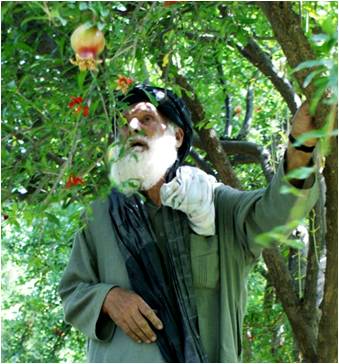Arghandab District, Kandahar on:
[Wikipedia]
[Google]
[Amazon]
Arghandab (
Pashto
Pashto ( , ; , ) is an eastern Iranian language in the Indo-European language family, natively spoken in northwestern Pakistan and southern and eastern Afghanistan. It has official status in Afghanistan and the Pakistani province of Khyb ...
/) is a district
A district is a type of administrative division that in some countries is managed by the local government. Across the world, areas known as "districts" vary greatly in size, spanning regions or county, counties, several municipality, municip ...
in the central part of Kandahar Province, Afghanistan
Afghanistan, officially the Islamic Emirate of Afghanistan, is a landlocked country located at the crossroads of Central Asia and South Asia. It is bordered by Pakistan to the Durand Line, east and south, Iran to the Afghanistan–Iran borde ...
. It borders Panjwai and Khakrez districts to the west, Shah Wali Kot District to the north and east and Kandahar District
Kandahar District or Dand District is situated in the central part of Kandahar Province, Afghanistan, surrounding the city of Kandahar. It borders Panjwai District to the west, Arghandab District to the north, Shah Wali Kot District to the no ...
to the east and south.
The population, as of 2006, was 54,900. The district centre is Arghandab, located northwest of Kandahar
Kandahar is a city in Afghanistan, located in the south of the country on Arghandab River, at an elevation of . It is Afghanistan's second largest city, after Kabul, with a population of about 614,118 in 2015. It is the capital of Kandahar Pro ...
. The Arghandab River
The Arghandab is a river in Afghanistan, about in length. It rises in Ghazni Province, west of the city of Ghazni, and flows southwest, passing near the city of Kandahar, before joining the Helmand River below the town of Grishk. In its lowe ...
flows through the district in its eastern part West from the district center, and the area is irrigated by the Helmand and Arghandab Valley Authority. C Clapp-Wicek & E Baldwin, U.S. Agency for International Development, published December 1983 The climate, river and irrigation allow the inhabitants to aggregate several different forms of produce. The main agricultural crops in this region are pomegranate
The pomegranate (''Punica granatum'') is a fruit-bearing deciduous shrub in the family Lythraceae, subfamily Punica, Punicoideae, that grows between tall. Rich in symbolic and mythological associations in many cultures, it is thought to have o ...
s, grape
A grape is a fruit, botanically a berry, of the deciduous woody vines of the flowering plant genus ''Vitis''. Grapes are a non- climacteric type of fruit, generally occurring in clusters.
The cultivation of grapes began approximately 8,0 ...
s, plum
A plum is a fruit of some species in Prunus subg. Prunus, ''Prunus'' subg. ''Prunus'.'' Dried plums are often called prunes, though in the United States they may be labeled as 'dried plums', especially during the 21st century.
Plums are ...
s, and ''Cannabis sativa
''Cannabis sativa'' is an annual Herbaceous plant, herbaceous flowering plant. The species was first classified by Carl Linnaeus in 1753. The specific epithet ''Sativum, sativa'' means 'cultivated'. Indigenous to East Asia, Eastern Asia, the pla ...
''.

History
Arghandab was known as "the gateway toKandahar
Kandahar is a city in Afghanistan, located in the south of the country on Arghandab River, at an elevation of . It is Afghanistan's second largest city, after Kabul, with a population of about 614,118 in 2015. It is the capital of Kandahar Pro ...
." Through the ridges that overlook Kandahar City to the north, the valley was the only viable northern route for commerce or invaders. If Arghandab was held, an invader could not enter the city from the north. In 2007, the Alkozay tribe ruled Arghandab, led by the mujahideen commander, Mullah Naqib. He and his Alkozay had safeguarded the city since 2001. The Arghandab Alkozay had a certain esprit de corps. They were proud of their green district and its pomegranates and grapes. They were even prouder of their warrior history and Mullah Naqib. They saw themselves as one group. If asked his home, a young tribesman would shout back, "Arghandab!" That pride was a powerful check on a Taliban
, leader1_title = Supreme Leader of Afghanistan, Supreme leaders
, leader1_name = {{indented plainlist,
* Mullah Omar{{Natural Causes{{nbsp(1994–2013)
* Akhtar Mansour{{Assassinated (2015–2016)
* Hibatullah Akhundzada (2016–present) ...
advance on Kandahar-whether in 1994 or 2007.
War in Afghanistan
The district was the site of the Battle of Arghandab in June 2008. On 16 November 2009,Taliban
, leader1_title = Supreme Leader of Afghanistan, Supreme leaders
, leader1_name = {{indented plainlist,
* Mullah Omar{{Natural Causes{{nbsp(1994–2013)
* Akhtar Mansour{{Assassinated (2015–2016)
* Hibatullah Akhundzada (2016–present) ...
attackers raided a police station, killing eight officers and wounding three. Three other police officers in the station disappeared, and a spokesman for the Kandahar governor's office, who asked not to be identified by name, said he was not sure if the officers who disappeared had a connection to the Taliban.
On 9 June 2010, a suicide attack at a wedding party in the village of Nagahan of the Arghandab district killed at least 40 people and wounded 77, making it one of the worst attacks of the year.
From November 2020, there have been multiple attempted takeovers of the district by Taliban. As of December 9, 2020, the district remains to be contested, with the Taliban believed to be occupying the area along the western bank and Afghan security forces believed to be occupying the eastern bank (including the Baba Wali Shrine).
On December 24, 2020, Afghan forces recaptured the entirety of the district, killing 37 insurgents in the process.
Notables
* Mullah Naqib * Shahwali Khan * Tayyab Agha *Syed Muhammad Akbar Agha *Niamatullah ArghandabiSee also
* Khosrow SoflaReferences
{{Authority control Districts of Kandahar Province